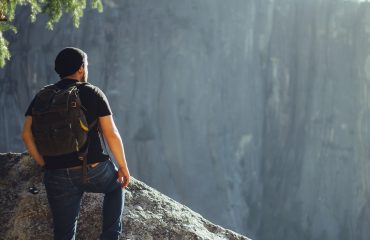How To Get Started With Mountaineering

Climbing may mean a number of different things: leading on a bolted route at one of your favorite climbing destinations, top-roping on a roadside rock or practicing your athletic moves inside of a gym. It may mean mountaineering as well, or using various off-trail travel, snow and rock skills for reaching a summit.
Summit climbs may be as long as an expedition of several months or as short as one day. Frequently they involve technical climbing in addition to unroped scrambling, river crossings or bushwhacking. Typical alpine climbs within the lower 48 states are just one to a couple of days in duration, however they still do require you to have technical know-how and physical preparation. Successful and safe mountaineering require rock rescue, crevasse, rappelling, belaying, navigation, knots and rope handling skills.
How To Get Ready
Physical Preparation
Mountaineering may involve lots of gear, so unless you are planning on hiring pack animals or porters, most likely you will need to carry it yourself. Your body needs to be in great shape in order for you to fully enjoy your adventure. Swimming, cycling and running are all great ways of preparing your cardiovascular system. To help strengthen your leg muscles that you use for climbing, you can work out on an indoor stair climber. You can strengthen your upper body through weight lifting to help you carry the pack you use with rock climbing.
However climbing with a pack is the best training you can do for climbing with your pack. Put weight onto your back and then head up a hill. Try out hikes nearby where there is some elevation. Or do some repetitions on a long flight of stairs. This kind of training can improve your stamina over the long run more than cycling or running can.
Mental Preparation
More than just technical climbing skill and athleticism are needed for mountaineering. A different mindset is needed than what is required for sports climbing that is near civilization. You need to be able to commit more energy and time for completing an alpine climb, and also be prepared to face some risk, discomfort and hardships along the way. That is why mountaineering is definitely not for everybody!
There can be great rewards that go along with going in a mountain environment. Imagine a sky full of stars and the sounds of your breathing. The route ahead is dotted by headlamps, then they go out one at a time as the first fingers of light start painting the glacier a bright pink color. Or determining a route while having smooth granite underneath your hands along with a breathtaking view that most people will only see from inside of an airplane. Those are special moments that can draw people out of the certainties offered by a short climb near the rob or comforts of a rock gym.
Go With A Guide
If mountaineering is a new experience for you, then a good way of jumping directly into the sport is find a guide service to hire. If you are fairly fit, then there are numerous mountain guides that are available all over the world that will take you up almost any mountain you want to climb. You can in fact sign up for climbing Mt. Everest as long as you have some prior mountaineering experience and can afford it. Most beginners choose something less ambitious than that and use their guided climb to help them learn basic mountaineering skills in the process.
Going Out On Your Own
Mountaineering by yourself can provide you with a great feeling of accomplishment as well as excitement of an alpine experience. Before going on an alpine climb with a private party, you need to first learn and also practice various skills. This training is provided by many different clubs, schools and organizations.
Before you go the following are a couple of skills you will need to have
Know how to use an Ice Axe
One of the fundamentals that need to be learned for mountaineering is how to use an ice axe. Self-belay involves planting your axe shaft into the snow in order to guard it falling on you to begin with. If you slip and fall, then the self-arrest will be used to stop you before you end up sliding too far. The right instruction and proper practice are needed in order for you to become proficient with ice axe techniques so that you can use them as needed.
Roped Glacier Travel
It becomes even more important to use an axe whenever you are rope to one person or more while you are crossing a glacier. You not only need the skills for stopping your own fall, but also you have to be alert to the other people who are on your rope team. You need to be prepared to self-arrest if anyone should slip and start to head for a drop-off or crevasse. Rope management is just as important. Knowing how and when to rope up, the amount of slack that needs to be left, and how to belay other fellow climbers are skills that are best taught be mountaineering clubs or schools with the right experience.
Whiteouts and Crevasses
For most of the spring and summer, on the U.S. mountains the basic snow routes are mostly straightforward roped ascents. However, during the late summer or the fall, crevasses start opening up as the snowfall for the year melts away. Packed glaciers, which were previously smooth, can turn into a maze of cracks and jumbled ice. In those conditions, route finding may be a lot more challenging. Whiteouts can also have their own special charms. For mountaineering it is imperative to be skilled with the compass and altimeter.
Crevasse Rescue
One final thing to think about before you strike out by yourself. If a companion was to fall in would you be able to recuse them? Using snow anchors properly, and a system called the Z-pulley are fundamental skills that are necessary for safe glacier travel. These and other types of rescue techniques are practiced by even experienced mountaineers every season in order to be prepared for the unexpected.




